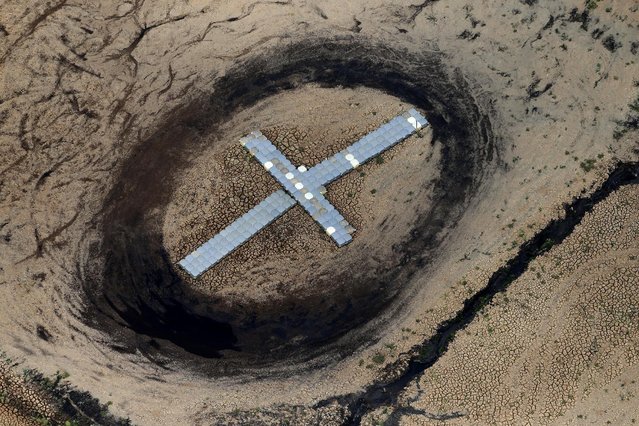
Pontoons, which were previously used as a floating jetty, are seen on the cracked ground of the Atibainha dam, part of the Cantareira reservoir, during a drought in Nazare Paulista, Sao Paulo state February 12, 2015. Brazil's worst drought in 80 years has left the Cantareira system, that provides greater Sao Paulo with most of its water, with the lowest water level on record. Brazil's economy is already expected to post zero growth this year. Worse yet, since Brazil depends on hydroelectric dams for about three quarters of its electricity, power shortages are also possible due to the drought, federal officials have said. (Photo by Paulo Whitaker/Reuters)
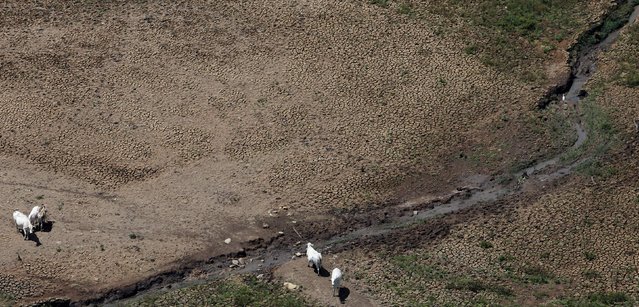
An aerial view shows cows on the cracked ground of Atibainha dam, part of the Cantareira reservoir, during a drought in Nazare Paulista, Sao Paulo state February 12, 2015. (Photo by Paulo Whitaker/Reuters)
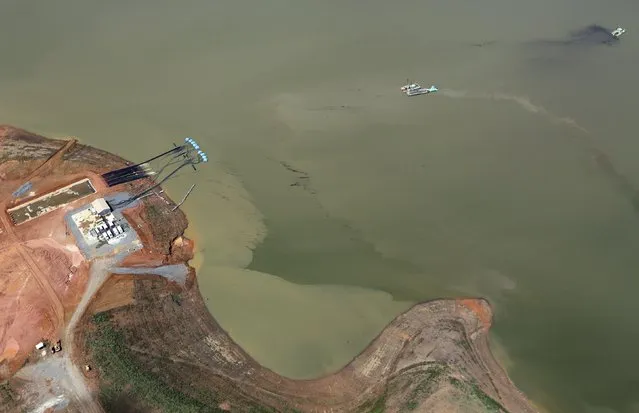
Boats from SABESP (top R), a Brazilian enterprise of Sao Paulo state that provides water and sewage services to residential, commercial and industrial areas, work next to pumps from the Jaguari dam station, which provides water to the SABESP systems, during a drought in Braganca Paulista, Sao Paulo state February 12, 2015. (Photo by Paulo Whitaker/Reuters)

An aerial view of shows illegally built slums on the border of the polluted water of Billings reservoir in Sao Paulo February 12, 2015. According to local media, the Billings dam supplies 1.6 million people in the Greater ABC region of Greater Sao Paulo and the state government wants to treat the water to be adequate for human consumption, adding to the complexity of securing safe water supply during the drought. (Photo by Paulo Whitaker/Reuters)
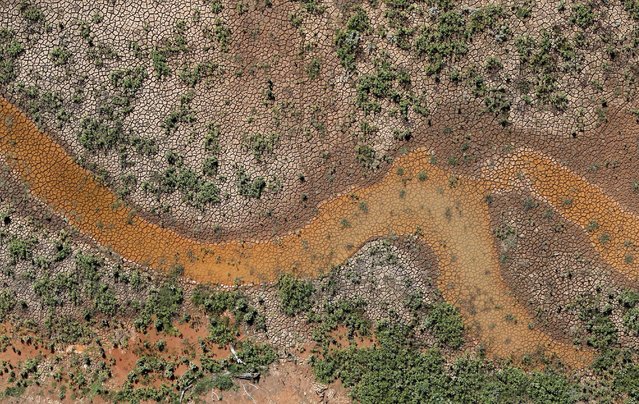
An aerial view of the cracked ground of the Atibainha dam, part of the Cantareira reservoir, is seen during a drought in Nazare Paulista, Sao Paulo state February 12, 2015. (Photo by Paulo Whitaker/Reuters)
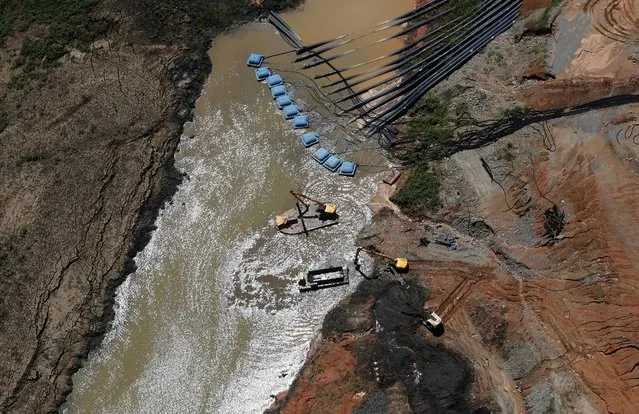
Machines from SABESP (bottom R), a Brazilian enterprise of Sao Paulo state that provides water and sewage services to residential, commercial and industrial areas, work next to pumps from the Jaguari dam station, which provides water to the SABESP systems, during a drought in Braganca Paulista, Sao Paulo state February 12, 2015. (Photo by Paulo Whitaker/Reuters)
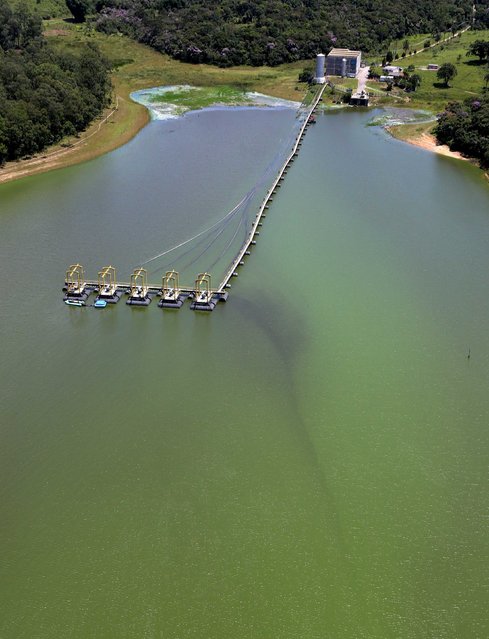
An aerial view of shows pumps used to transfer polluted water from the Billings reservoir to the Guarapiranga reservoir in Diadema February 12, 2015. According to local media, the Billings dam supplies 1.6 million people in the Greater ABC region of Greater Sao Paulo and the state government wants to treat the water to be adequate for human consumption, adding to the complexity of securing safe water supply during the drought. Brazil is facing its worst drought in 80 years and its economy is already expected to post zero growth this year. Worse yet, since Brazil depends on hydroelectric dams for about three quarters of its electricity, power shortages are also possible due to the drought, federal officials have said. (Photo by Paulo Whitaker/Reuters)
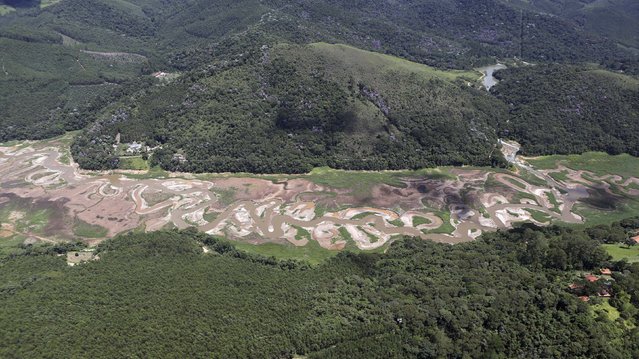
An aerial view of the Atibainha dam, part of the Cantareira reservoir, is seen during a drought in Nazare Paulista, Sao Paulo state February 12, 2015. (Photo by Paulo Whitaker/Reuters)
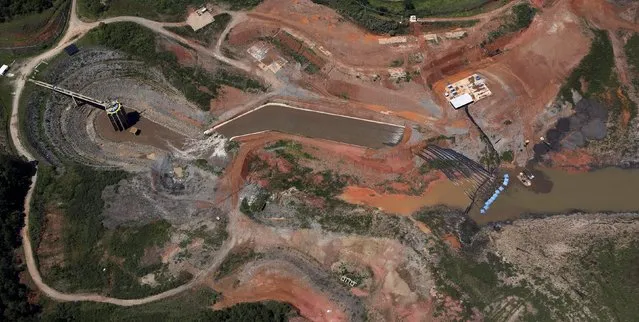
Machines from SABESP (R), a Brazilian enterprise of Sao Paulo state that provides water and sewage services to residential, commercial and industrial areas, work next to pumps from the Jaguari dam station, which provides water to the SABESP systems, during a drought in Braganca Paulista, Sao Paulo state February 12, 2015. (Photo by Paulo Whitaker/Reuters)
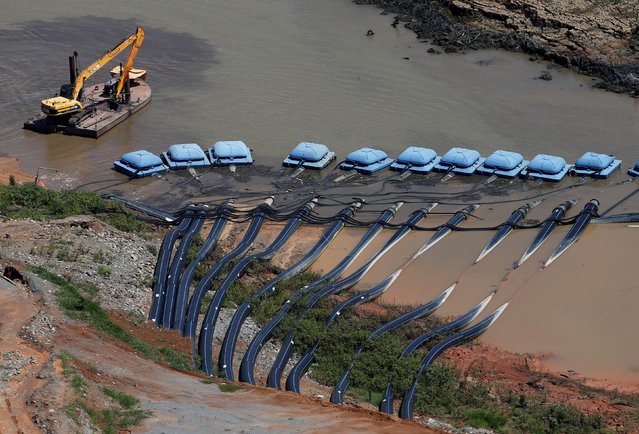
A machine from SABESP (L), a Brazilian enterprise of Sao Paulo state that provides water and sewage services to residential, commercial and industrial areas, works next to pumps from the Jaguari dam station, which provides water to the SABESP systems, during a drought in Braganca Paulista, Sao Paulo state February 12, 2015. (Photo by Paulo Whitaker/Reuters)
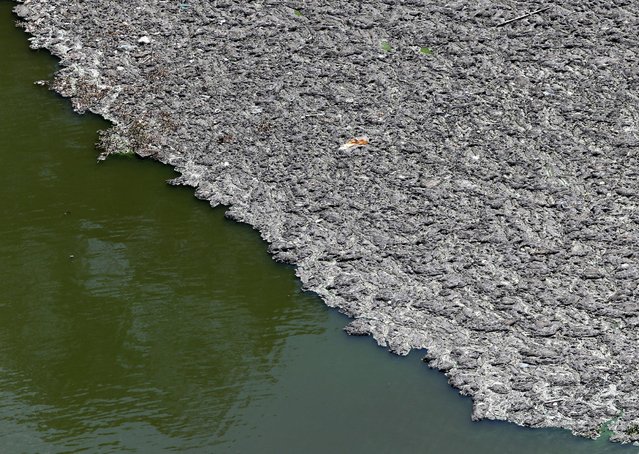
Trash floats on top of the polluted water of Billings reservoir in Sao Paulo February 12, 2015. According to local media, the Billings dam supplies 1.6 million people in the Greater ABC region of Greater Sao Paulo and the state government wants to treat the water to be adequate for human consumption, adding to the complexity of securing safe water supply during the drought. (Photo by Paulo Whitaker/Reuters)
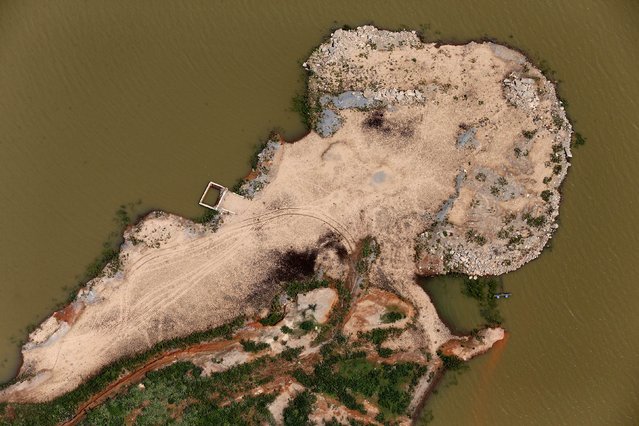
An aerial view of the cracked ground of the Atibainha dam, part of the Cantareira reservoir, is seen during a drought in Nazare Paulista, Sao Paulo state February 12, 2015. (Photo by Paulo Whitaker/Reuters)
15 Feb 2015 14:19:00,
post received
0 comments
